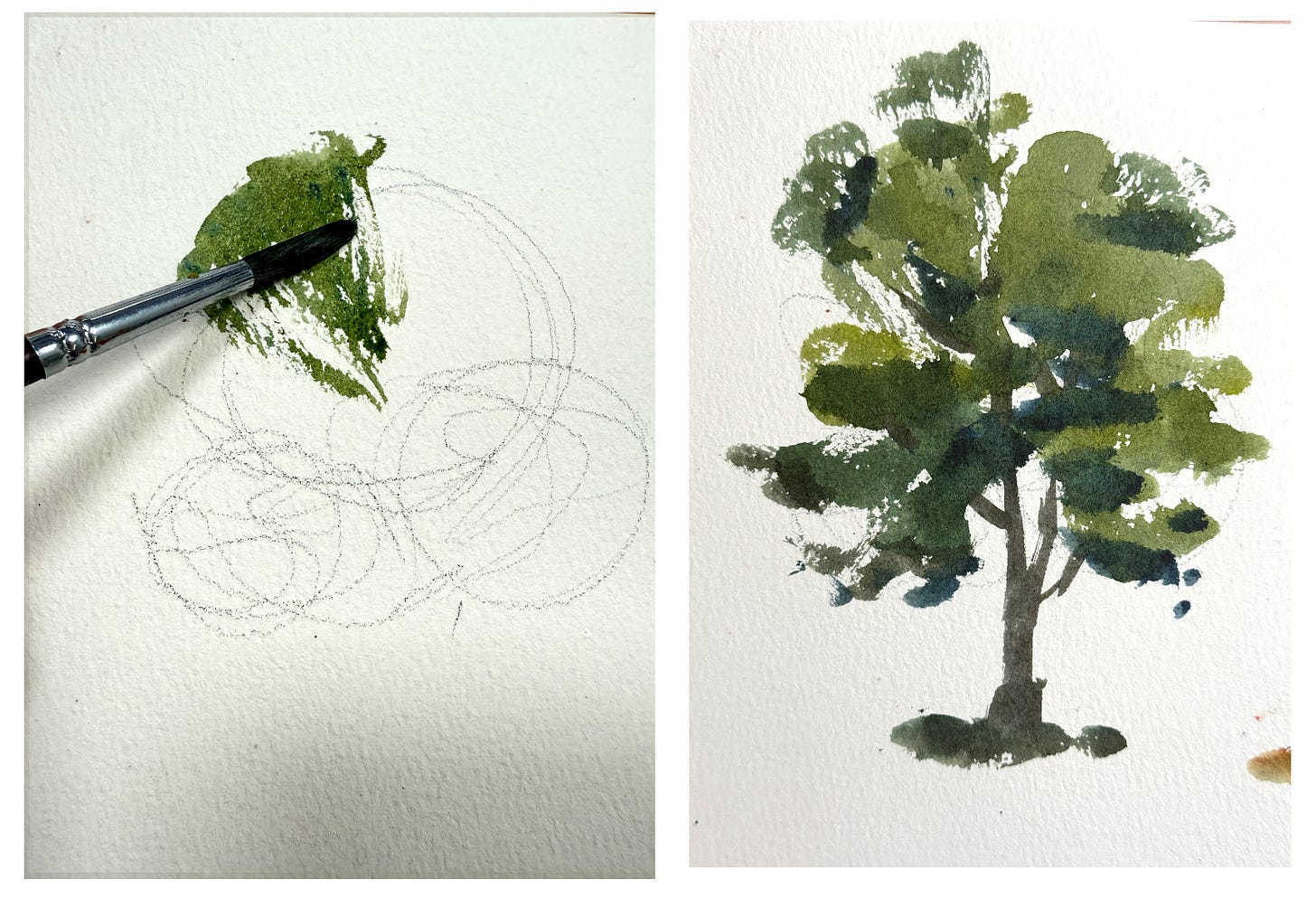Trees with Texture
Create foliage with loose brushwork
We’re back to trees this week.
In a past Watercolour Workout, we looked at the overall shape and silhouette of trees. This week we’re focusing on texture and edges and practicing foliage that looks leafy and natural, and not like big blobs, or candy floss on sticks.
Trees are often a prominent element in landscapes, so getting them right matters. They were a real struggle for me as a beginner and I’ve ruined many a painting with a clumsy tree at the end.
Trees also make excellent standalone subjects for quick watercolour studies.
We’re specifically using the dry brush technique to create convincing tree shapes.
Exercise
Start with a loose outline, just a few overlapping circles work perfectly. Remember the big-medium-small approach from a recent workout? Use it to create natural looking clusters of foliage.
Mix a juicy, warm green (think yellow-green, not forest green). Get plenty of paint on your brush, but not too watery, you want it slightly dry for texture.
Use the side and tip of your brush and drag it from the outside edges toward the centre of each foliage cluster. Change the angle of your brush, vary your pressure, and let some strokes be light and broken. This creates those natural, leafy edges that say “tree” rather than “green ball.” Works best on Cold Press or Rough paper.
Before the foliage dries, use a darker colour to connect the foliage masses with branches and a trunk, letting the colour bleed slightly into the wet foliage.
Drop in a darker, cooler green where you want shadows within the foliage. This adds depth and dimension. Work quickly and let the colours mingle on the paper.
Repeat and vary
Now paint several more trees, changing the shapes, colours, sizes, and texture of the edges each time. Tall and narrow, short and bushy. Variety builds your visual library.
Examples
Videos of all 3 trees are in the premium section below.
Why this exercise
The dry brush technique gives you organic edges that look natural.
The exercise teaches us to work loose. Beginners often paint trees too carefully, trying to control every mark. Trees want to be suggested, hinted at.
Plus, a page of quick tree studies looks beautiful and feels productive. Win-win.
I’ll leaf you to it,
Patrick
Next up for premium subscribers:
Video tutorial of all three examples
Link to a free ebook: Essential Tree Painting Tips
Ideas for taking this exercise further
If you upgrade to a paid subscription, you get access to my archive of 45+ Watercolour Workouts, each with videos, tips, and exercises like this one.
I don’t thank you enough for your Watercolour Workouts ...I come back to the exercises all the time especially when I feel stuck as to what to do!!
– Cecilee
Black Friday offer: 20% off annual subscription, until Monday
Keep reading with a 7-day free trial
Subscribe to Watercolour Workout to keep reading this post and get 7 days of free access to the full post archives.



